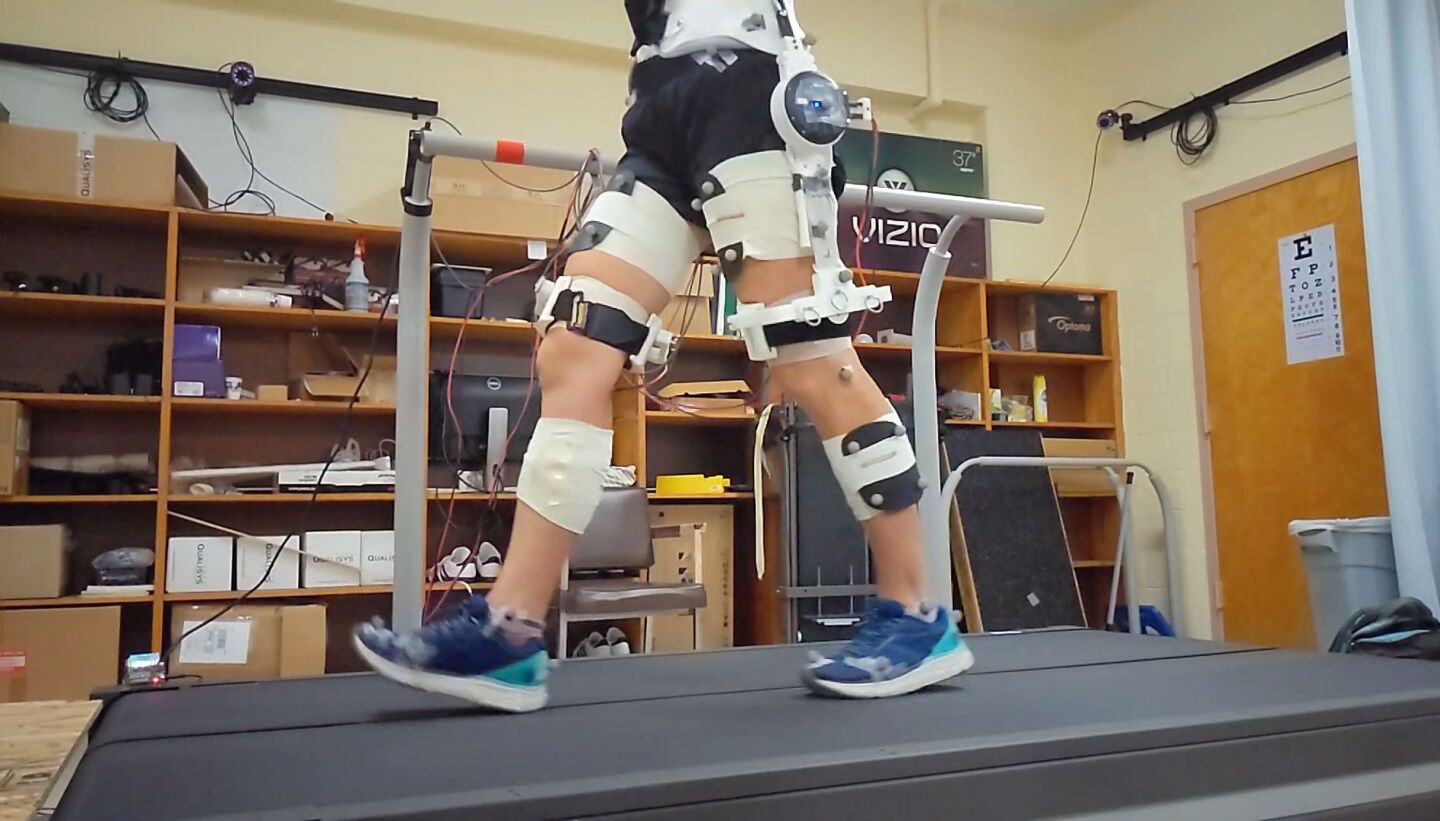Researchers are developing a robotic exoskeleton platform that could overcome the limitations of treadmills used during the rehabilitation of the many stroke survivors who have problems walking.
More than 80% of stroke patients can lose normal function in one leg, which affects their natural gait, increasing the risk of falling and preventing them from engaging in certain activities – perhaps leading to a more sedentary lifestyle and its associated health issues.
Training a patient’s body to correct asymmetrical gait is a vital component of rehabilitation efforts, and we’ve seen a number of robotic exoskeletons used in conjunction with treadmills over the years. But there is room for improvement.
“The ultimate goal of gait rehabilitation is not to improve walking on a treadmill – it is to improve locomotor function overground,” said Meghan Huber, senior author of a study from the University of Massachusetts Amherst. “With this in mind, our focus is to develop methods of gait rehabilitation that translate to functional improvements in real-world contexts.”
Inspired by the success of split-belt treadmills, the team has managed develop a hip exoskeleton system that mimics the actions of side-by-side belts moving at different speeds to amplify gait asymmetry to enhance motor learning.

University of Massachusetts Amherst
The compact exoskeleton in question is a custom creation from the Human Robot Systems Laboratory at Amherst, which is worn around the waist and secured to the user’s thighs. An actuator at each hip joint provides the limb-moving torque while a Raspberry Pi 4 controls the show.
The proof of concept was programmed to mimic the functionality of a split-belt treadmill by applying resistive forces at one hip while the other is treated to assistive forces, altering gait symmetry in the process. It was tested on just over a dozen healthy volunteers, with the team finding that the device “elicited adaptation in spatiotemporal and kinetic gait measures similar to split-belt treadmill training.”
Though power and processing during this study were off-device, the team is now moving to develop a portable setup for overground settings, in the hope of future clinical applications.
“A portable exoskeleton offers numerous clinical benefits,” said lead author of the study, Banu Abdikadirova. “Such a device can be seamlessly integrated into the daily lives of chronic stroke survivors, offering an accessible way to increase training time, which is critical for improving walking. It can also be used during early intervention in hospitals for improved functional outcomes.”
A paper on the development has been published in IEEE Transactions on Neural Systems and Rehabilitation Engineering.
Source: University of Massachusetts Amherst
appId : ‘38456013908’,
xfbml : true,
version : ‘v3.3’
});
};
(function(d, s, id){
var js, fjs = d.getElementsByTagName(s)[0];
if (d.getElementById(id)) {return;}
js = d.createElement(s); js.id = id;
js.src = “https://connect.facebook.net/en_US/sdk.js”;
fjs.parentNode.insertBefore(js, fjs);
}(document, ‘script’, ‘facebook-jssdk’));
